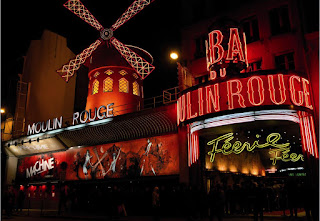There I was, where I never expected to be, breathing hot Sicilian air slowly and deeply and, where possible, doing so in the shade. Jean-Claude had decided we would do a guided tour of Sicily and a comprehensive one at that.
In the past, during my years in the hotel and tourism sector, I was on the ‘other side of the fence’. I was often responsible for key accounts with tour operators and meeting their needs, keeping them more than happy to choose my hotels for their tour groups.
Here in Sicily I was on a tour with a tour guide from tour operator Donatello, having hotels and meals organised and sitting on a bus or walking for hours on planned excursions rather than doing everything independently.
This has its pluses and minuses. The pluses are not having to think for yourself and knowing in advance what most of it will cost though many activity costs were in addition. The minuses are having no choice about the length of your day and having to move hotels all the time, eat what you are given (which offers NO choice and is often not very authentic) and get up early to be on the bus by 7.45am each day. You can’t stop and shop if you want to, when you want to, and as a consequence I bought almost nothing. However, I did see a lot of Sicily.
It’s also an interesting experience to travel with other people, strangers. You learn a little about them and you do tend to bond a bit with a few. Most of them were very agreeable to be with, helpful and colourful, like one guy a wee bit younger than me whom we nicknamed Indiana Jones because of his hat and outgoing nature. There was a mix in ages from very young adults who were part of a family group, to couples and also fairly elderly solo travellers. All could be accommodated easily on walks because no one was disabled or very unfit.
This was only the second time I had been to a country where I couldn’t speak any of the language. I do not know Italian other than about 5 words I’d taught myself. The French said learning Italian was fairly easy for them because it has a lot in common with French, but most of them had never made the effort to learn it. Oddly enough, I discovered my English ability to be a great asset. It’s more useful than French, in Europe, certainly when dealing with shopkeepers or hotels. I was able to problem-solve a few times whereas JC couldn’t because they couldn’t understand him. Cool!
Meals were really challenging for me for three reasons. Firstly because they start later than I am accustomed and after a physically shattering day queuing and slogging up and down hills I was ready for bed rather than dinner. Secondly, because there was NO choice of entrees mains or desserts. This was a surprise because I know that many tour groups offer at least a limited choice of menu. Fish, followed by fish, or Chicken followed by fish... I don’t eat either and most meals consisted of this. It was a relief to me that Salvatore our tour guide spoke to hotel staff each meal and asked them to provide something edible for me. This always consisted of veal. Every dinner I had a veal dish. Some were crappy, others delicious. Disappointingly, none were my favourite Italian dish – Veal Marsala.
The third difficulty with meals is that, incredibly, you are provided with a minimum of 7 dishes per day. Imagine doing this for a week. This is breakfast, three plates for lunch and three plates for dinner, sometimes four. I had to pace myself and eat mostly partial plates and leave the rest. Most people didn’t pace themselves and most were much bigger than me. Most drank alcohol on top of this. I stuck to still water, the best way to rehydrate.
It’s not a relaxing holiday style; we were constantly exhausted by the physical demands of walking so long in such heavy heat (more than 30 degrees Celsius each day). We quickly learnt to only walk in shaded areas or sides of the road to avoid heatstroke and sunburn. From time to time Salvatore would give us an hour or an hour and a half to look around by ourselves or have a much needed drink at a cafe. That helped. Our bus driver was excellent. He had his work cut out for him avoiding accidents in narrow Sicilian streets. We had a close shave at one point as a truck tried to pass our bus in a tiny street. Our driver skilfully braked and judged things to the thickness of the paintwork which meant I didn’t get wiped out of my window seat. There was an audible gasp from our members when it happened but it was soon forgotten.
Photos show cats too hot to do anything, Salvatore our genial guide, being part of a tour group.












